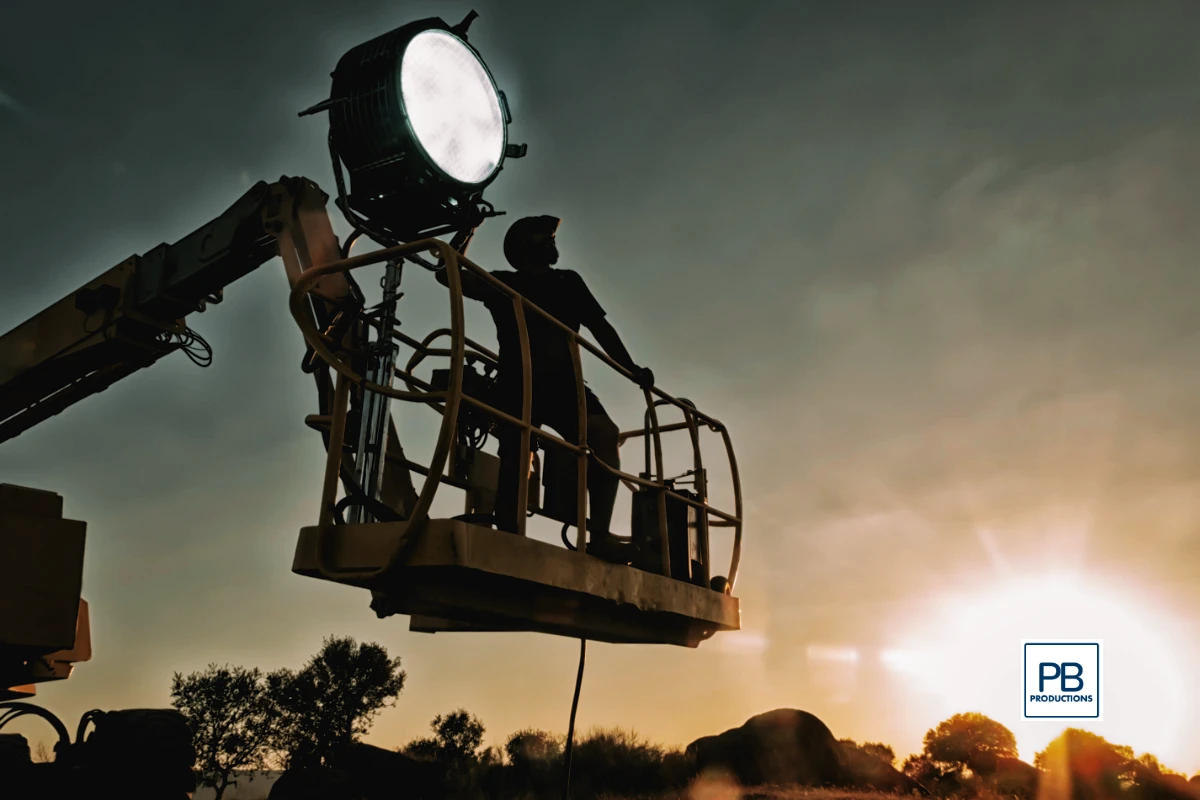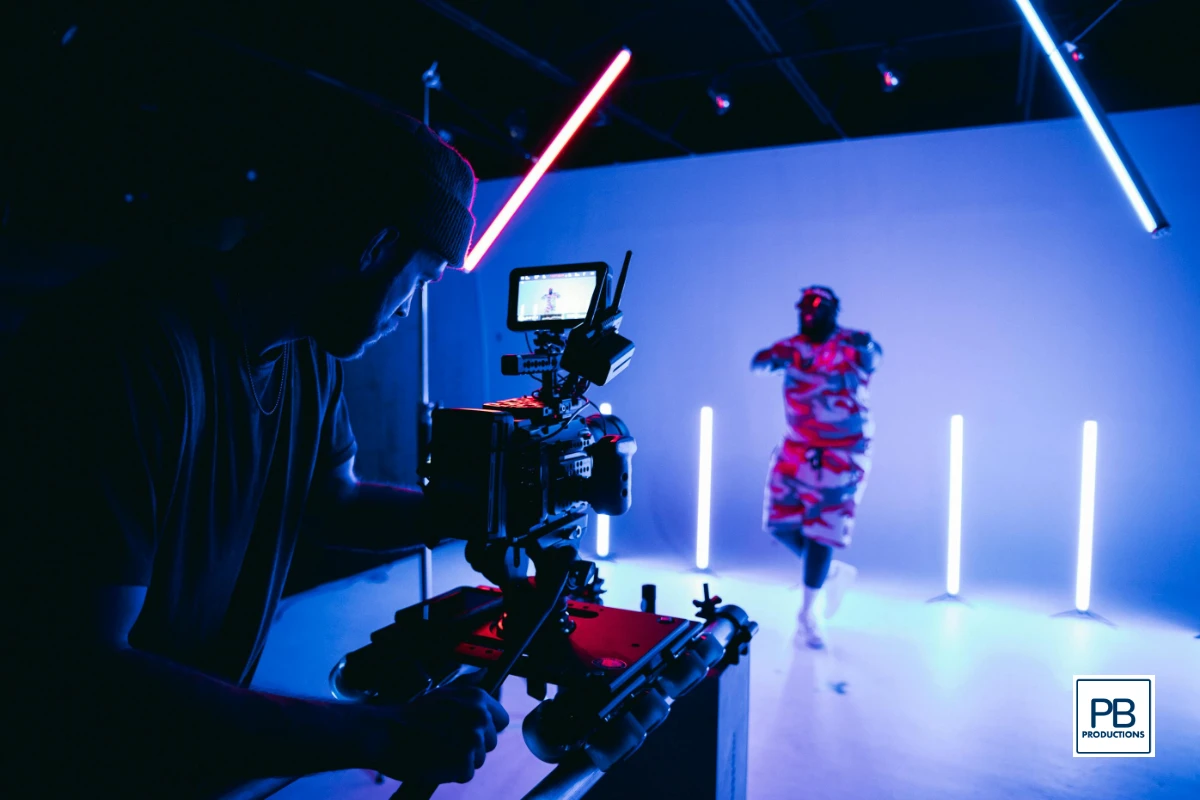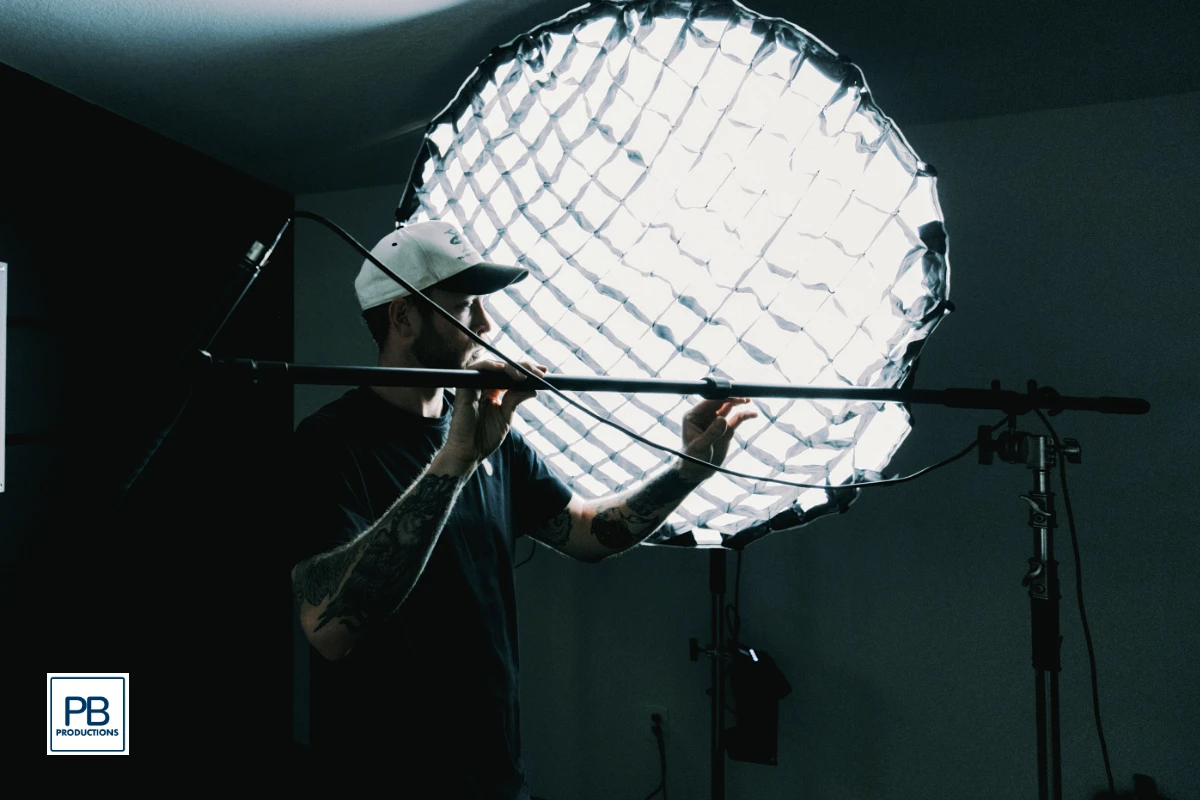Ever wondered who’s behind those stunning visuals in your favorite movies or TV shows? While directors and actors often get the limelight, the role of a gaffer is crucial in bringing those captivating scenes to life. But what exactly does a gaffer do?

The term “gaffer” has an interesting origin. It dates back to the 19th century, where it was used to refer to an old man or a foreman. In the film industry, it evolved to denote the head electrician responsible for the lighting on set. Initially, gaffers were simply responsible for setting up lights. However, as technology and cinematic techniques advanced, their role expanded to include more creative and technical responsibilities.
Primary Responsibilities of a Gaffer
A gaffer’s primary duty is to manage all lighting equipment on set. This includes everything from simple spotlights to complex rigs. They work closely with the Director of Photography (DoP) to create the desired lighting design. This involves planning the lighting layout and ensuring it complements the director’s vision. The gaffer and the DoP are like Batman and Robin. They collaborate to achieve the perfect look for each scene, adjusting the lighting to create the desired mood and atmosphere.
A good gaffer must be well-versed in various lighting techniques. Whether it’s three-point lighting, soft lighting, or high-key lighting, they need to know it all. Knowing how to use and troubleshoot various types of lighting equipment is essential. From LED panels to tungsten lights, a gaffer must be a tech wizard. Given that they handle a lot of electrical equipment, gaffers must have a strong understanding of electrical principles and safety protocols to prevent any on-set accidents.

The Creative Side of Gaffers
Lighting can make or break a scene. Gaffers use their creative flair to design lighting that enhances the emotional tone of a scene, making it more impactful. Beyond just lighting a scene, gaffers help in creating a unique visual style. Whether it’s a noir film or a vibrant musical, they play a key role in defining the look and feel. On-set challenges are inevitable. A gaffer needs to be quick on their feet to solve any lighting issues that arise, ensuring the shoot goes smoothly.
Before shooting begins, gaffers are involved in pre-production meetings, scouting locations, and planning the lighting setup. During filming, gaffers oversee the lighting setup, make adjustments as needed, and ensure everything runs smoothly. Though their primary role is on set, gaffers may also be involved in post-production to ensure the final product matches the intended lighting design.
Training and Career Path for Gaffers
While film school provides a solid foundation, many gaffers learn their trade through hands-on experience and on-the-job training. Courses in lighting design, electrical safety, and film production can be beneficial. Certifications in electrical work are also highly valued. Starting as an assistant or apprentice is a common pathway. Networking with industry professionals can also open doors to new opportunities.
Many gaffers begin their careers as lighting assistants or electricians, gaining valuable experience on set. With experience, gaffers can advance to more senior positions, taking on larger projects and more responsibilities. Some gaffers choose to specialize in particular types of lighting or genres, further enhancing their expertise and career prospects.
Many gaffers have made significant contributions to the film industry. Their work often goes unrecognized but is essential to the visual storytelling process. The innovative lighting techniques and creative solutions developed by notable gaffers have had a lasting impact on the industry, influencing how films and TV shows are made today.

Changing Roles of Gaffers
With advancements in technology, the role of gaffers is continually evolving. New lighting technologies and digital tools are changing how gaffers work. Trends such as LED lighting and smart lighting systems are becoming more prevalent, offering new opportunities and challenges for gaffers. As the industry changes, so does the role of gaffers. They must adapt to new technologies and methods while continuing to deliver high-quality lighting design.
The role of a gaffer is both technical and creative, making it essential to the film and TV production process. Their expertise in lighting not only enhances the visual quality of a production but also helps to tell the story in a compelling way. Whether you’re an aspiring filmmaker or just a movie buff, understanding the gaffer’s job gives you a deeper appreciation for the artistry that goes into every scene.
To become a gaffer, you typically need a combination of technical training in lighting and electrical work, along with hands-on experience on film sets. Film school can be beneficial, but on-the-job training is invaluable. A gaffer is the head of the lighting department and oversees all lighting decisions on set. The best boy is the gaffer’s assistant, responsible for managing the lighting crew and equipment. Yes, gaffers can work in various industries, including theater, live events, and corporate video production, where lighting expertise is needed. Salaries for gaffers can vary widely depending on the size and scope of the production, but experienced gaffers can earn a substantial income, often ranging from $50,000 to $100,000 or more annually. Working hours for gaffers can be long and irregular, often involving early mornings, late nights, and weekends, depending on the production schedule.
Frequently Asked Questions about Gaffers
What qualifications do you need to become a gaffer?
To become a gaffer, you typically need a combination of technical training in lighting and electrical work, along with hands-on experience on film sets. Film school can be beneficial, but on-the-job training is invaluable.
How does a gaffer differ from a best boy?
A gaffer is the head of the lighting department and oversees all lighting decisions on set. The best boy is the gaffer’s assistant, responsible for managing the lighting crew and equipment.
Can a gaffer work in other industries besides film and TV?
Yes, gaffers can work in various industries, including theater, live events, and corporate video production, where lighting expertise is needed.
How much does a gaffer typically earn?
Salaries for gaffers can vary widely depending on the size and scope of the production, but experienced gaffers can earn a substantial income, often ranging from $50,000 to $100,000 or more annually.
What are the working hours like for a gaffer?
Working hours for gaffers can be long and irregular, often involving early mornings, late nights, and weekends, depending on the production schedule.
